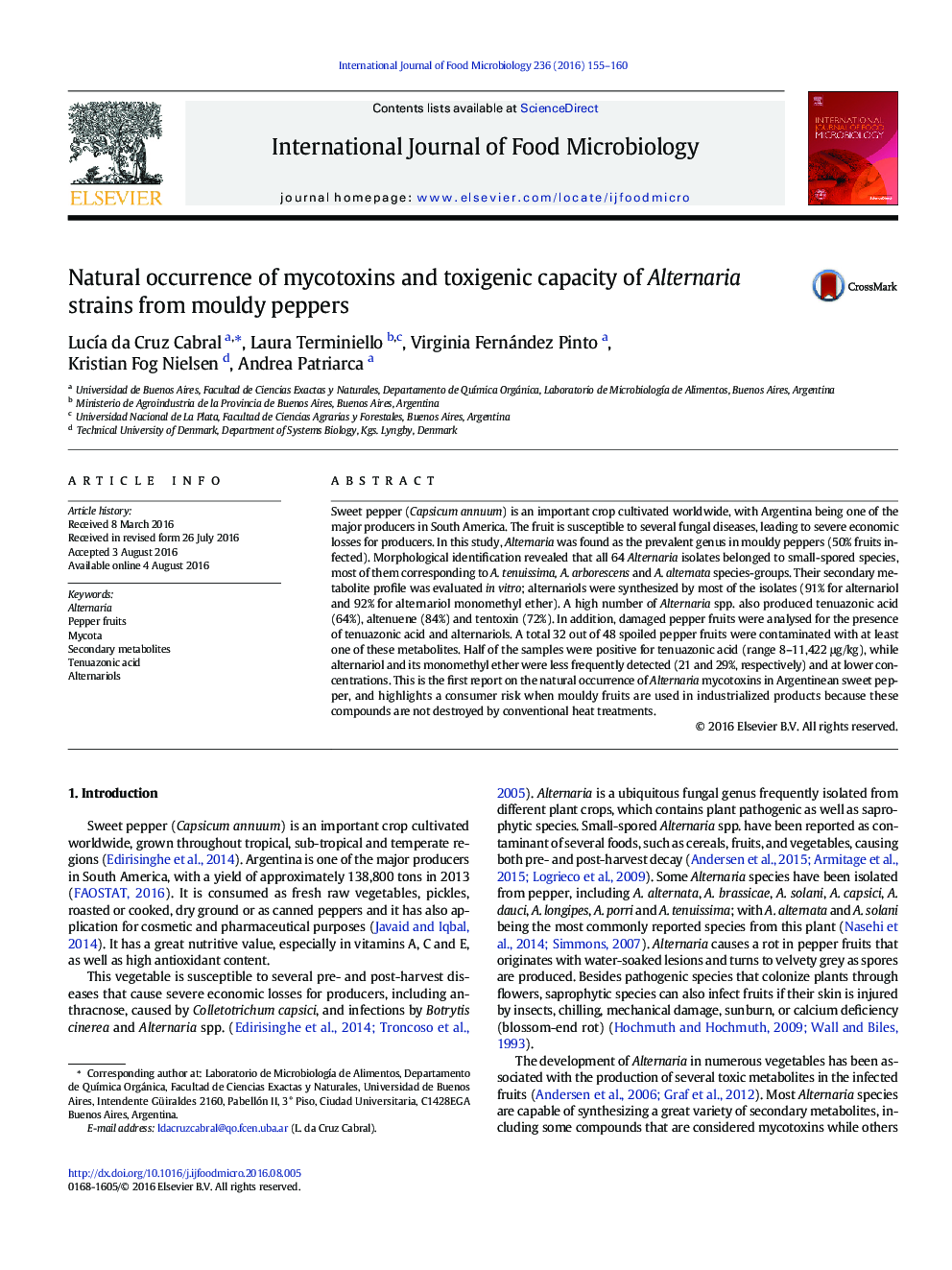| Article ID | Journal | Published Year | Pages | File Type |
|---|---|---|---|---|
| 4366256 | International Journal of Food Microbiology | 2016 | 6 Pages |
•Alternaria was the most frequent fungal contaminant in Argentinean mouldy peppers.•Small-spored Alternaria isolates from peppers showed high toxigenic potential.•Mouldy peppers were contaminated with tenuazonic acid and alternariols.
Sweet pepper (Capsicum annuum) is an important crop cultivated worldwide, with Argentina being one of the major producers in South America. The fruit is susceptible to several fungal diseases, leading to severe economic losses for producers. In this study, Alternaria was found as the prevalent genus in mouldy peppers (50% fruits infected). Morphological identification revealed that all 64 Alternaria isolates belonged to small-spored species, most of them corresponding to A. tenuissima, A. arborescens and A. alternata species-groups. Their secondary metabolite profile was evaluated in vitro; alternariols were synthesized by most of the isolates (91% for alternariol and 92% for alternariol monomethyl ether). A high number of Alternaria spp. also produced tenuazonic acid (64%), altenuene (84%) and tentoxin (72%). In addition, damaged pepper fruits were analysed for the presence of tenuazonic acid and alternariols. A total 32 out of 48 spoiled pepper fruits were contaminated with at least one of these metabolites. Half of the samples were positive for tenuazonic acid (range 8–11,422 μg/kg), while alternariol and its monomethyl ether were less frequently detected (21 and 29%, respectively) and at lower concentrations. This is the first report on the natural occurrence of Alternaria mycotoxins in Argentinean sweet pepper, and highlights a consumer risk when mouldy fruits are used in industrialized products because these compounds are not destroyed by conventional heat treatments.
